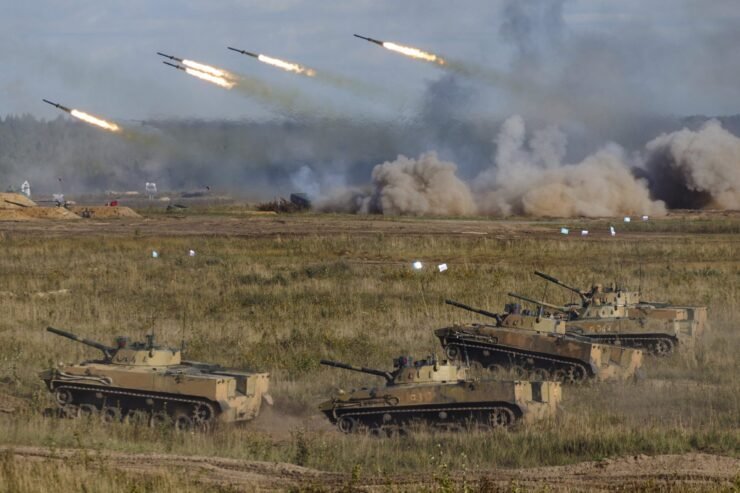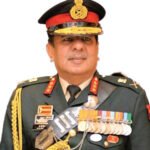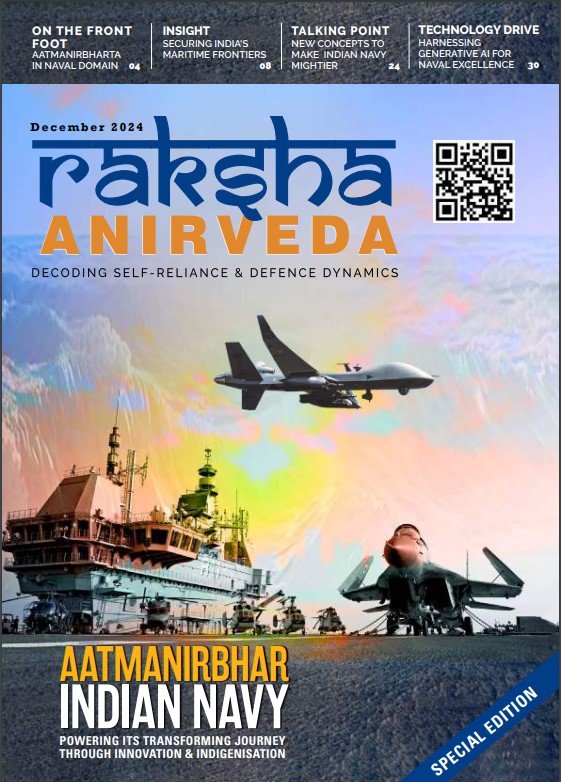A history is a place of reference, not residence. Yet many times history has contextual lessons for the present and future. The tragedy of the Ukrainian conflict is embedded in the historical past. In particular, the Monroe Doctrine 1823, the Treaty of Versailles and the US-driven events of the last three decades post disintegration of the Soviet Union. The present Ukrainian imbroglio is more a manifestation of these embedded geopolitical faultlines, than the lesser predominant principles of ‘Sphere of Influence’, ‘Strategic Location’ or ‘Geoeconomics’ of resource-driven expansion. The Monroe doctrine, often quoted by US policy pundits, drives its foreign policy of the right to unilateral intervention against any country as ‘Jus ad Bellum’. It manifested in the post-cold war for decades seeing US intervention in over a dozen countries with impunity often leaving them more chaotic than they existed before. Second, the Treaty of Versailles, one of the most controversial armistice treaties post WW1, sowed the seeds of repression and mistrust leading to WW2. This has manifested in its new avatar of systemic sub-judication of Russia by the US-led Europe and NATO after the Soviet disintegration in 1991. Between 1997 to 2021, NATO expanded manifold in five trances to bring the threat knocking on the Russian door. Ukraine remained the finality of opening that door. Lessons of the 1962 Cuba crisis and the threat escalation were buried with a one-sided ostrich view. The Super Power Syndrome remained more ideologically egoistic than the realities of its diminishing stature and retrenchment in present times.
Once a rejuvenated Russia recovered from the profound political and socio-economic crisis of the post-Soviet decade under President Putin, the only question was when and where Russia would take a stand against systemic encroachment of its national security. Both time and patience were running out with no assurances of peace through dialogue. Ironically, Ukraine became a West-enticed pawn who was led down the garden path to be finally supported by only cheerleaders. Once again the art and science of geostrategy were forgotten. The art of integrating a disintegrated nation into the new global order for a more peaceful present and the science of geostrategy conceptually embedded in Newton’s third law of motion of the inevitability of reaction of a self-respecting State to provocative actions against its core interests were forgotten. Then came the infertile approach of sanctions as a punitive policy. No state in history has ever crumpled by sanctions and most have come out stronger with alternatives. Russia-China’s embrace as a fallout of sanctions will be more bonding and will hurt the US and European Union. A China-Russia bond economy and currency will be the biggest threat to the US dollar and the Euro. Sanctions will also adversely hit the Russian energy-dependent Europe, which will have to find alternatives at a higher cost.
As the Ukraine-Russia conflict unfolds at a rapid pace, its offshoot effect with neighbouring countries of Russia uniting to strengthen their military capabilities will create regional instabilities. Predicting its outcome may be easy but getting it right will be difficult. The information war and management of the electromagnetic spectrum has led to narratives and counter-narratives to shape perceptions.
Ironically in this conflict, there are no winners. The greatest beneficiary possibly would be China and the ultimate loser Ukraine – the battleground zero. The suffering of the people of Ukraine like in any war is indeed tragic and was much avoidable.
As regards China, it gets yet another strategic opportunity and adrenaline boost to its professed ‘legitimate core interest’ which presents it with both opportunities and challenges. China periodically has got its much-welcomed breathing space first during the GWOT as a fallout of 9/11, second the Covid-19 impact and third now with Ukraine deflecting focus to trans-Atlantic from Asia and Indo pacific.

While challenges to its already fractured economy and energy imports will remain as a fallout of the sanctions emanating from the new Cold War, the availability of a greater quantum of both energy and food supplies from Russia to China will be a win-win situation for both. Also, a revisionist China could get bolder on the Taiwan front and expand its power play in the Indo-Pacific. If Taiwan goes the China way even after a decade, the Indian front will get the primary focus next. India being the only QUAD nation to abstain from a vote against Russia in the UN could also have its dynamics. Chinese rise and belligerence could directly impact India’s national interest and security canvas sooner than expected.
As regards India, it has played its cards well in balancing its conflicting choices. India’s stand has been principled and bold. Every nation has the right to carve its foreign policy based on its national interests and make choices based on a cost-benefit analysis. UN stands antiquated and defunct as a global peacemaker. India’s stand is not pro-Russia or pro-US, it’s pro-India for the preservation and furtherance of its national interest. There are no interests but self-interests in real politics. There is nothing known as absolute strategic autonomy; strategic
dependence is suicidal; so strategic balancing in pursuit of one’s national interest is pragmatic. India is no more a swing power but a balancing power based on its national interests. India stands at the cusp of strategic opportunity from being a spectator to a player in the global arena. In the present geopolitical context, the world needs India more than India needs the world because of its geostrategic location, its economic resilience and military capability duly empowered by decisive polity and agile diplomacy. Yet forewarned is forearmed to the multiple challenges in its growth trajectory.
India also needs to learn the lessons so far from the ongoing conflict both from the Russian and Ukrainian perspectives. India will have to fight its battles alone. No nation will step into other’s conflict zone irrespective of strategic partnerships. The sanctions will hurt India’s energy security, economy and military modernisation plans like S-400 under CAATSA. Thus, the glaring imperative of both self-reliance and technology infusion in all spheres particularly defence. Atmarnirbharta is the only way forward in pursuance and preservation of national interest. We may be walking the talk in this direction but the need is to take giant leaps not baby steps with time sensitivity.
Militarily while we need to bridge the capability deficit in the non-kinetic domain as well as the kinetic domain which are mutually complementary as seen in this conflict. The voids in C5ISR, Space capabilities, cyber and IW merit focus. The cliché ‘War is not an option’ needs to be thrown out of the window. Conventional wars with hybrid content are here to stay and we need to prepare for them in all domains with synergy. ‘Boots and Tracks’ on the ground will remain predominant, much to the disappointment of those who find it fashionable to say ‘The Obituary of the Tank has been signed’. The relevance and role of tanks have come to the fore loud and clear in the Ukrainian conflict and the Ladakh impasse. Technology empowered Integrated Battle Groups based on combined arms grouping led by Tanks in a joint operational environment has not only captured the Ukraine war visuals but have lessons for the application of manoeuvre warfare in the Indian context. The case for a light tank for northern borders needs impetus. Another area for military strategic and operational leadership reorientation is the need to imbibe a preemptive and proactive offensive outlook based on domination, dislocation and denial. Our present deterrence and warfighting strategy remains essentially defensive and reactive.

Russian offensive was well planned and orchestrated to attain selected military objectives with the least cost and in a minimum time alongside sensitivity to civilian casualties. It unfolded with information warfare and the shaping of battlespace by non-kinetic and kinetic means. The C5ISR systems deployed enabled effective suppression of Air Defence and targeting Command and Control Centres by aerial platforms and precision-guided missiles. Yet the battlespace visualisation and comprehending enemy resolve-cum-resistance seems to have been misread by the Russians. Further, urban warfare and fighting in the built-up area has their dynamics. India must learn and empower its civil defence apparatus for such contingencies, which merit a national-level rejuvenation. Another area of operational planning is when an offensive operates from exterior lines, full-proof logistics and command and control and their disruptions can impact the desired execution tempo. Further capitulation is more important than the capture of centres’ of gravity, the aim being to cause physical and psychological paralysis and break the will of the adversary. These operational level lessons need to be imbibed in the Indian operational context, even as further on-ground reality will unfold with time.
To conclude, India has batted well on the diplomatic front. Yet it needs to learn multiple lessons as the conflict unfolds. It needs to envision the dynamic geopolitical future and be prepared for the entire spectrum of contingencies employing all instruments of national power in symphony. Time is critical and India needs to be prepared to prevail with a sense of urgency.
-The author is a PVSM, AVSM, VSM has had an illustrious career spanning nearly four decades. A distinguished Armoured Corps officer, he has served in various prestigious staff and command appointments including Commander Independent Armoured Brigade, ADG PP, GOC Armoured Division and GOC Strike 1. The officer retired as DG Mechanised Forces in December 2017 during which he was the architect to initiate process for reintroduction of Light Tank and Chairman on the study on C5ISR for Indian Army. Subsequently he was Consultant MoD/OFB from 2018 to 2020. The Officer is a reputed defence analyst, a motivational speaker and prolific writer on matters of military, defence technology and national security.The views expressed are personal and do not necessarily carry the views of Raksha Anirveda.






